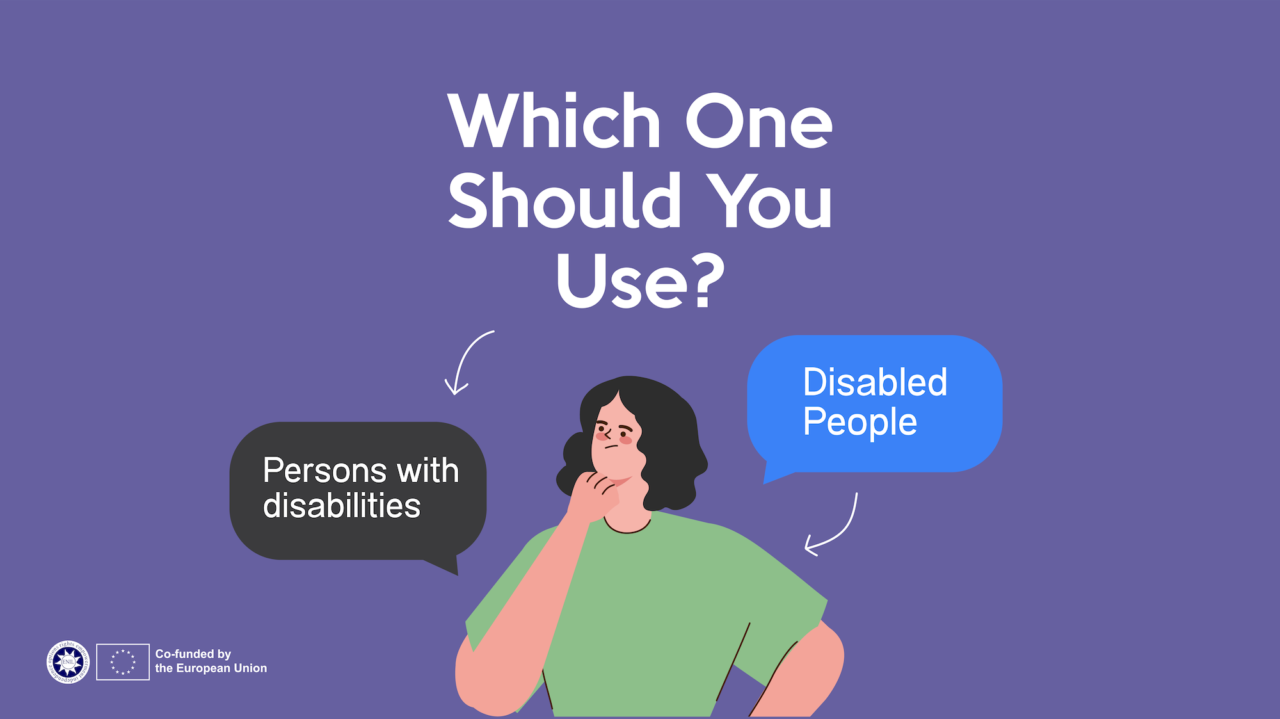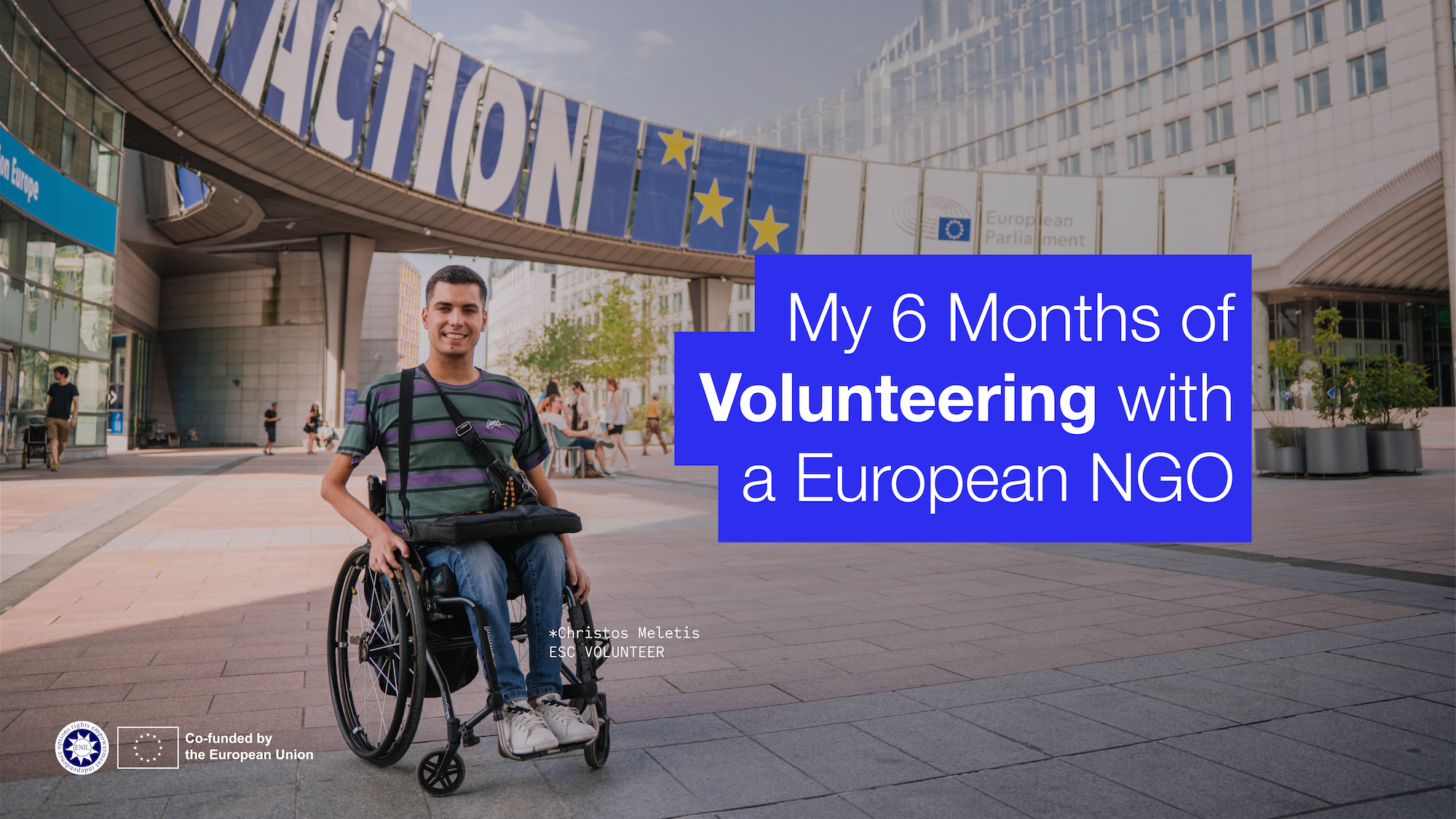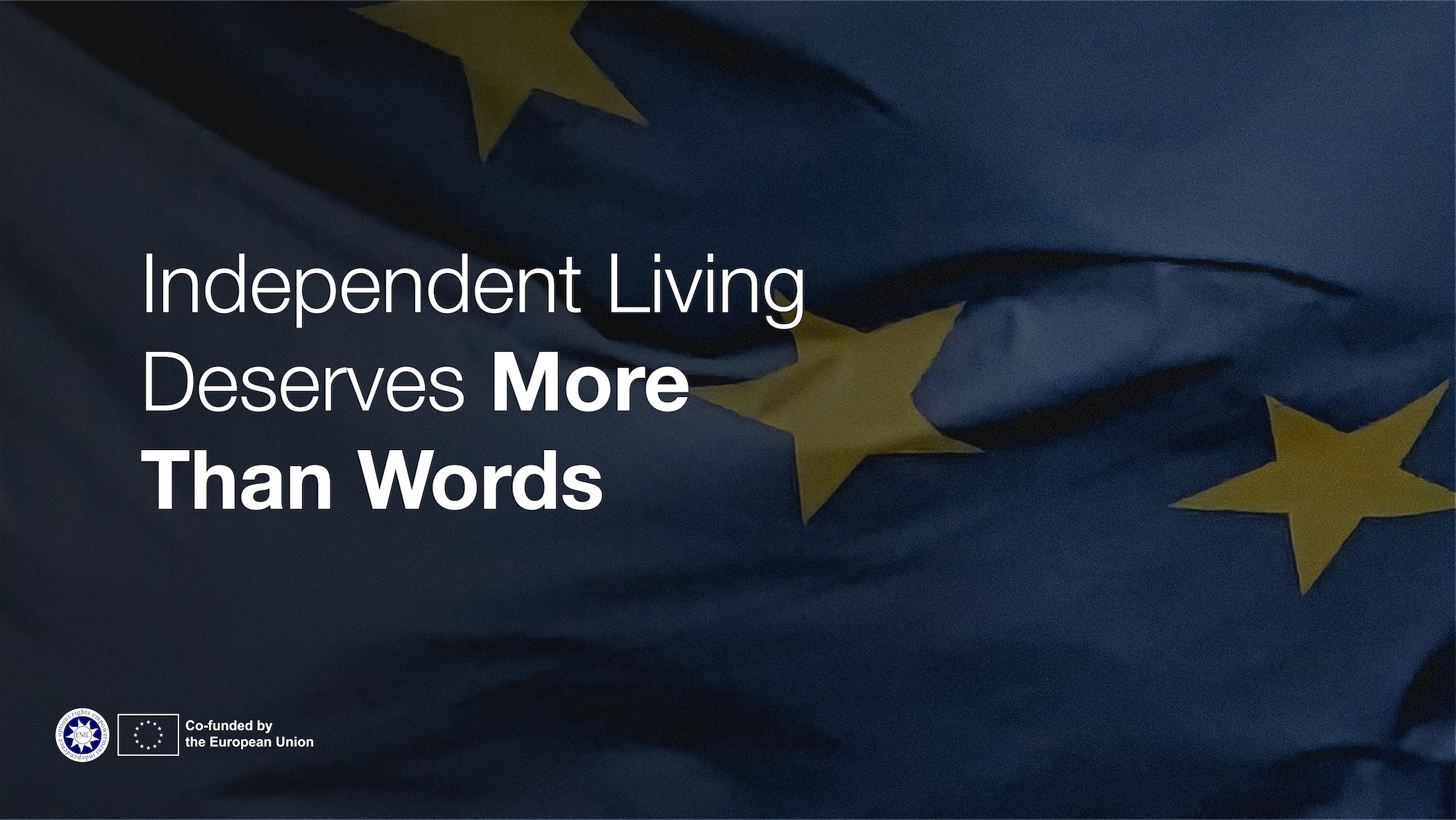An article written by ENIL’s volunteer Christos Meletis
Many people—both disabled and non-disabled—don’t realize that there is an ongoing debate about whether we should say “disabled people” or “people with disabilities.”
There are two main approaches when addressing people with impairments:
- Identity-First Language (IFL): e.g. disabled person, blind person, paraplegic person
- Person-First Language (PFL): e.g. person with a disability, person with a mental disorder, person with a visual impairment
In this article, I focus on the use of the terms disabled/disability -not how people identify with their impairments- , since this terminology is the most debated.
The Debate
Person-first language is adopted by several important organizations and institutions, among them the United Nations Convention on the Rights of Persons with Disabilities (UNCRPD), the European Commission, the World Health Organization (WHO), and large umbrella NGOs such as the European Disability Forum (EDF). Also, professional associations, including the American Psychological Association (APA) and the American Medical Association (AMA), also strongly recommend person-first usage in their guidelines.
On the other hand, many disability rights advocates and activists support the use of identity-first language. Organizations such as the European Network on Independent Living (ENIL), Autism-Europe, and the European Union of the Deaf (EUD) embrace identity-first terms. Nationally, the UK disability rights movement as a whole has long preferred identity-first language
Identity-First Language (IFL): ‘Disabled Person’
This approach was advanced by Mike Oliver in his book The Politics of Disablement. Oliver argued that we should identify as disabled people rather than people with disabilities, since we are disabled by society -as this is the approach of the Social Model of Disability.
According to Oliver the phrase “person with disabilities” implies that disability is part of the individual, while the social model of disability teaches that barriers in society create disability.
Using the term “Disabled Person” puts the disability identity front and center, highlighting the collective aspects in a world that often stigmatizes Disabled People and makes them feel ashamed of their bodies. But it is also a fundamental political tool, used for years by the disability movement in the struggle for rights and inclusion.
The term was therefore redefined to express a shared cultural and political identity. It highlights that disability is not an individual issue, but a collective experience of oppression—and a call to action for social change.
In short, identity-first language is a way of highlighting that:
- We are disabled by society, not by our bodies.
- Disability is not something to hide, but a source of pride and solidarity.
Person-First Language (PFL): “Person with a disability”
This approach emphasizes the person first, suggesting that disability is only one aspect of an individual’s identity.
Within the disability community, PFL is often linked to the medical model of disability, but it is also widely used in the United Nations Convention on the Rights of Persons with Disabilities (CRPD). For this reason, it is often adopted by supporters of the human rights model of disability as well.
Some scholars argue that PFL can help reduce stereotyping, since IFL may reinforce the idea that all disabled people share the same characteristics.
Preferences Within the Disability Community
A survey of 519 disabled people by Sharif, McCall et al. (2022) found that:
- 49% preferred identity-first language,
- 33% preferred person-first language,
- 18% had no specific preference.
While this research is valuable, the sample size is small and cannot represent universal preferences. More research is needed.
ENIL’s Perspective
ENIL promotes identity-first language (IFL) because, as a grassroots disability rights organisation, it was born from the powerful impact of the social model of disability. The social model, though not perfect, has been central to advancing disability rights by shifting the focus away from individuals’ impairments and onto the barriers created by society. ENIL continues to adhere to this model and its ideals, as it reflects the lived experience of disabled people and frames disability as a political and social identity rather than a personal tragedy.
At the same time, ENIL recognises the value of the human rights model of disability, especially in its practical applications. The UN Convention on the Rights of Persons with Disabilities (UNCRPD) provides a legal and policy framework that strengthens advocacy efforts, holds governments accountable, and helps translate the principles of the social model into binding commitments. By combining both models, ENIL can stay true to its activist roots while also making use of the legal and institutional tools available at European and international levels.
Author’s view
As a disabled activist, I most often use identity-first language—especially in disability rights advocacy—because it highlights the identity I am speaking about.
However, I also recognize that many disabled people prefer person-first language, for different reasons. Some may find the word “disabled” too stigmatized or even used as an insult, while others simply don’t want to put disability at the forefront of their identity.
So, while on the one hand I use IFL most of the time, I also support the use of both approaches. My advice to other disabled people is: do your own research, listen to the community, and choose the language that best expresses your own identity.
Just keep in mind that the way we use language has a big impact on how we—and others—perceive the people we are talking about. It’s always important to be intentional in how we use disability terminology, especially in an ableist world where prejudice against disabled people constantly tries to shape our identity. Terms like “differently abled” or “special needs” may be well-intentioned, but in reality they can undermine our rights and our fight for emancipation, and even the use of IFL or PFL can have a great impact on how disability is perceived.



